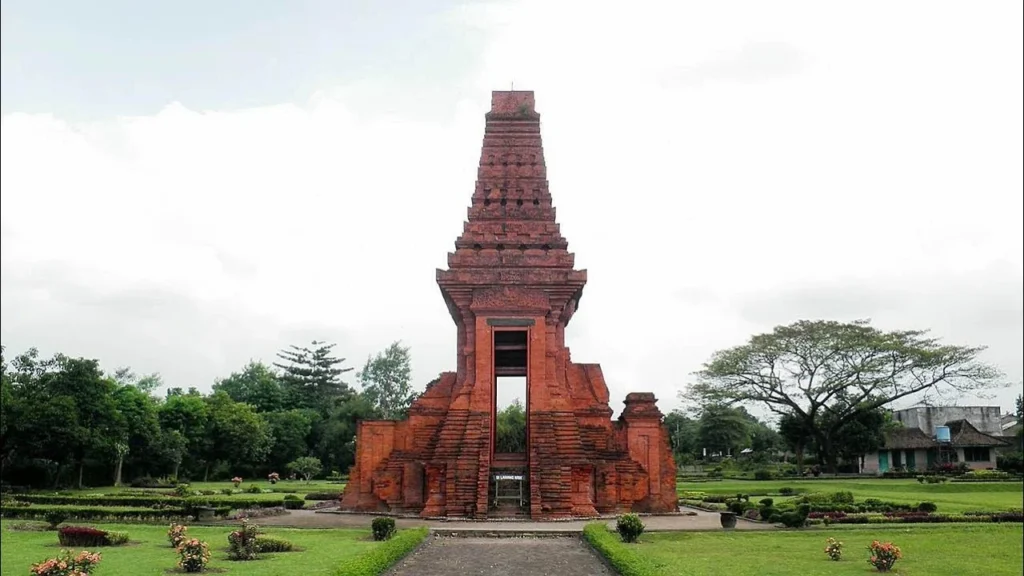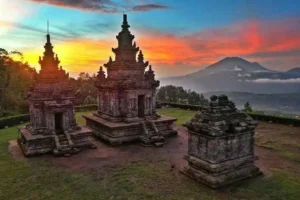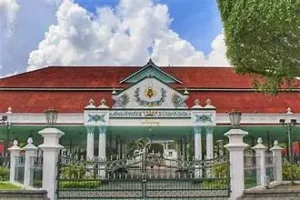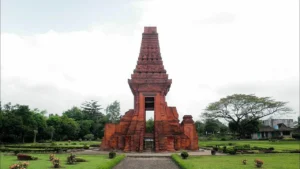Indonesia, with its rich cultural and historical wealth, is a magnet for travelers eager to explore its historical heritage. Java, one of the largest islands in Indonesia, boasts a rich history reflected in its diverse array of temples, palaces, and History of Java. For tourists looking to experience the authenticity of Java’s cultural heritage, traveling with a local travel agency can be the best choice. Local travel agencies not only offer an in-depth understanding of these History of Java but also help tourists explore History of Java in a sustainable and responsible manner.
Through guided tours led by local experts, visitors can delve into the stories behind each magnificent temple, understand life within majestic palaces, and directly experience Java’s rich history. Thus, this experience not only offers aesthetic satisfaction but also pays homage to this precious cultural heritage. Java is not just an ordinary tourist destination but also a journey through the corridors of time, revealing its greatness and historical beauty to the modern world.
Exploration of History of Java: Temples
source : daftar.wanitabaik.com
One of the main attractions of History of Java is the presence of ancient temples scattered throughout the island. Upon entering the central Java region, one encounters one of the undeniable wonders of the world, the Borobudur Temple. This temple not only attracts thousands of visitors each year with its majestic architecture reflecting the grandeur of Buddhist religion but also symbolizes the greatness and magnificence of the ancient Mataram kingdom. Located in the Magelang district, the Borobudur temple complex consists of nine levels or terraces forming a pyramid, with beautiful Buddhist stupas at the top.
Each stupa at Borobudur contains a statue of Buddha facing the four cardinal points, creating a sacred atmosphere that touches the hearts of visitors. This spiritual experience is a major draw for tourists, also offering an in-depth insight into the development of art and culture in Java.
However, Borobudur is not the only fascinating historical site in Java. Far northeast of Yogyakarta lies Indonesia’s largest Hindu temple complex, the Prambanan Temple. Surrounded by lush green rice fields, Prambanan offers captivating natural charm. This temple complex consists of three main temples dedicated to the Trimurti, Brahma, Vishnu, and Shiva, along with several smaller temples adorning its surroundings.
Prambanan’s impressive reliefs depict epic tales from Hindu mythology, showcasing astonishing artistic perfection. With the assistance of an experienced local travel agency, tourists can explore the historical and spiritual richness behind each relief and stone structure of these temples.
Java’s rich history and its cultural and spiritual heritage are beautifully reflected through Borobudur and Prambanan. From the grandeur of the architecture to the beauty of the reliefs, every detail of these two temples reinforces the close link between the past and the present. Each temple stone is a silent witness to the long journey of Javanese civilization, sparking the interest of visitors to explore and understand the deep-rooted cultural roots embedded in this island. Thus, through the presence of Borobudur and Prambanan, History of Java continues to live on and inspire future generations.
Exploration of History of Java: Palaces
source : anekatempatwisata.com
Palaces, or keratons, have been symbols of Java’s past power and glory since time immemorial. Among the most famous palaces is the Yogyakarta Palace, the official residence of the Sultan of Yogyakarta and his family. In this majestic complex, visitors can feel the grandeur of traditional Javanese palaces rich in preserved art and culture. However, the presence of the Yogyakarta Palace is not limited to central power but also bears silent witness to the Indonesian people’s struggle for independence against colonization.
Exploring the palace complex will not only enrich one’s knowledge of history but also provide a deep experience of Javanese cultural richness. Buildings such as the main palace and the pendopo preserve many stories and traditional values still relevant today. Additionally, various museums in the complex also house collections related to Javanese history and culture, making it a highly important place to visit for those seeking a deeper understanding of Java’s cultural heritage.
However, the Yogyakarta Palace is not the only place to offer this valuable experience. In Surakarta, there is the Solo Palace, which also boasts impressive architecture and a rich history. As one of the largest palaces in central Java, the Solo Palace is still inhabited by the royal family, who regularly maintain and preserve Javanese traditions and culture. By visiting the Solo Palace, tourists can experience the same charm and beauty as those of the Yogyakarta Palace while gaining a broader understanding of the role of palaces in Java’s political, social, and cultural development.
With the assistance of an expert local travel agency, visitors can explore these two palaces more deeply. They will be guided to understand the importance of both palaces in History of Java and directly see how traditional values are still respected and closely preserved by Javanese society today. Thus, traveling to the Yogyakarta Palace and the Solo Palace is not just an ordinary vacation but also an opportunity to feel and appreciate the cultural richness passed down from generation to generation for centuries.
Exploration of History of Java: Historical Sites
source : youtube.com
In addition to temples and palaces, Java is also home to other interesting History of Java to explore. History of Java is rich in cultural and civilizational heritage that has lasted for millennia. For example, the Trowulan temple complex, the ancient capital of the Majapahit kingdom, offers an intriguing view of the glory of this ancient realm.
Located in the Mojokerto district, East Java, Trowulan is one of Indonesia’s largest archaeological sites, with ruins of imposing buildings and artifacts discovered on-site. History of Java is clear at Trowulan, where visitors can feel the aura of grandeur once held by the Majapahit kingdom. Tourists can explore these History of Java while listening to legends of Majapahit’s golden age and its role in Indonesian history.
The Sangiran archaeological site, located in the Sragen district, Central Java, is an important fossil site for human ancestors. Focused on History of Java, Sangiran provides insight into human evolution in the region. The discovery of ancient human fossils at Sangiran is significant evidence of man’s journey to Java. With the assistance of a local travel agency, visitors can gain a deeper understanding of the importance of each historical site in the broader narrative of History of Java.
Additionally, Java also offers the Sukuh temple and the Jago temple, two other interesting historical sites. The Sukuh temple, located in Central Java, is known for its unique architecture and reliefs depicting past spiritual life. The Jago temple, in East Java, features beautiful artistic reliefs and tells deep mythological stories. The presence of these sites enriches our understanding of the richness of History of Java and culture.
While exploring these historical sites, tourists not only experience the architectural and artistic wonders of the past but also absorb the cultural heritage that has existed for centuries. Each relief, building, and artifact has its own story reflecting the life of Javanese society in the past. By understanding and appreciating this heritage, we can better appreciate and understand the cultural diversity in Indonesia. Thus, when planning your next trip, don’t forget to explore this wonderful richness of History of Java.
Conclusion:
Exploring the history of Java through its temples, palaces, and historical sites offers a enriching experience for any traveler passionate about Indonesian cultural heritage. The island of Java, rich in history, has become a magnet for tourists eager to discover the deep and diverse roots of the culture. With the assistance of an experienced local travel agency, your adventure in Java to explore its history will be better organized and memorable.
The majestic temples scattered throughout Java provide a clear insight into past grandeur. From the monumental complex of Borobudur Temple to the graceful Prambanan Temple, each stone structure tells the story of past greatness and wisdom. With the help of expert local guides, you can explore every corner of the temple and deepen its historical significance.
Exploring Java’s palaces, rich in local culture and wisdom, is equally captivating. The palaces of Yogyakarta and Solo are silent witnesses to the past glory of the Java kingdom, showcasing art, architecture, and traditions still alive today. With a local travel agency, you can traverse the corridors of palaces and immerse yourself in the thick royal atmosphere.
Furthermore, historical sites such as Taman Sari and the Sukuh temple also offer their own charm to visitors wishing to delve into History of Java and culture. With the right guide, every relief, statue, and stone structure of these sites will reveal an interesting story from Java’s past.
By exploring these historical destinations in Java with an experienced local travel agency, you will not only be amazed by the natural beauty and impressive architecture but also gain a deeper understanding of the rich history, culture, and identity of Java. History of Java becomes the thread that connects the past to the present, and through this adventure, you will be part of an unforgettable narrative about the greatness and beauty of the island of Java. Plan your trip to Java now to explore this rich history of Java.







